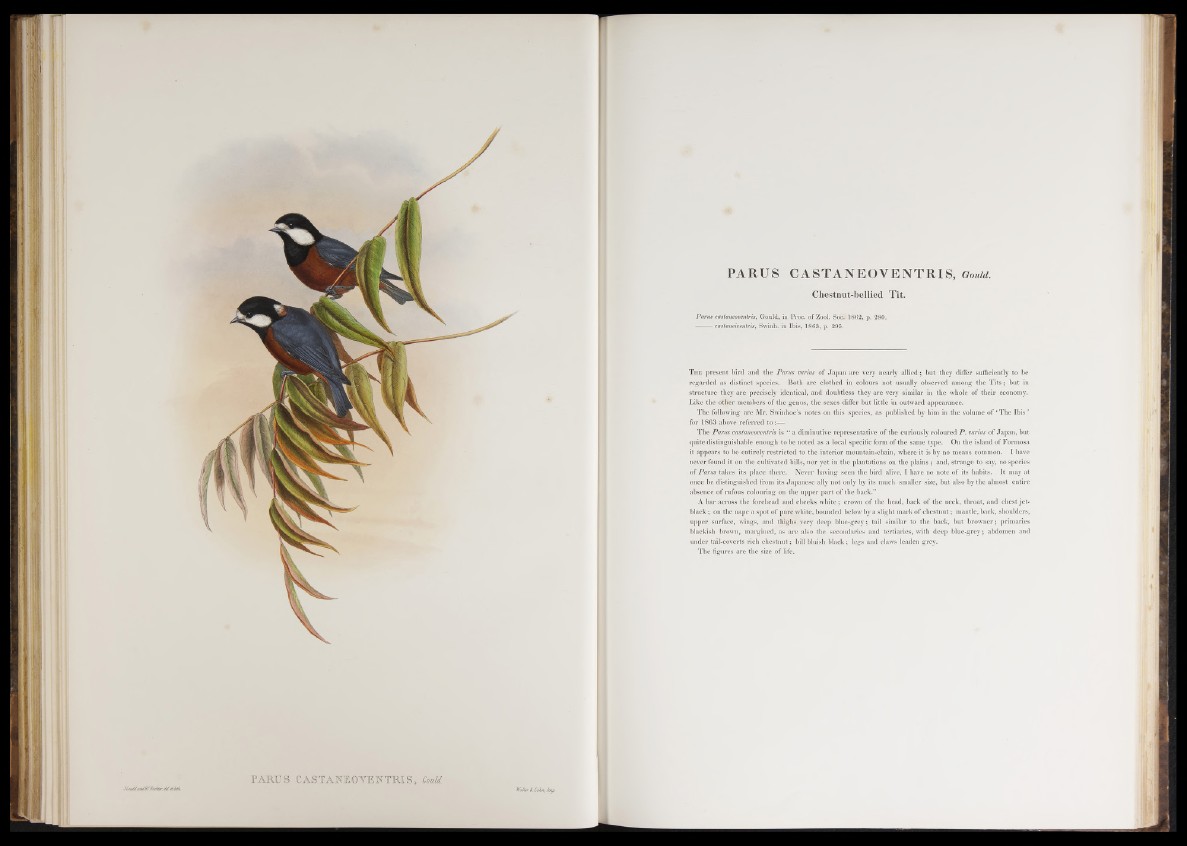
PA R U S CAS T A K E O V E ÏT T R IS , GouU.
P A R U S C A S T A N E O V E N T R I S , G o u i d .
Chestnut-bellied Tit.
Parus castaneoventris, Gould, in Proc. of Zool. S og; 1862, p. 280.
castaneiventris, Swinh. in Ibis, 1863, p. 295.
T h e present bird and the Parus varius of Japan are very nearly allied; but they differ sufficiently to be
regarded as distinct species. Both are clothed in colours not usually observed among the T i ts ; but in
structure they are precisely identical, and doubtless they are very similar in the whole of their economy.
Like the other members of the genus, the sexes differ but little in outward appearance.
The following are Mr. Swinhoe’s notes on this species, as published by him in the volume of ‘ The Ibis ’
for 1863 above referred t o :—
The Parus castaneoventris is “ a diminutive representative of the curiously coloured P . varius o f Japan, but
quite distinguishable enough to be noted as a local specific form of the same type. On the island of Formosa
it appears to be entirely restricted to the interior mountain-chain, where it is by no means common. I have
never found it on the cultivated hills, nor yet in the plantations on the plains ; and, strange to say, no species
of Pams takes its place there. Never having seen the bird alive, I have no note of its habits. It may at
once be distinguished from its Japanese ally not only by its much smaller size, but also by the almost entire
absence of rufous colouring on the upper part of the back.”
A bar across the forehead and cheeks wh ite; crown o f the head, back of the neck, throat, and chest jet-
black ; on the nape a spot o f pure white, hounded below by a slight m ark o f chestnut; mantle, back, shoulders,
upper surface, wings, and thighs very deep blue-grey; tail similar to the back, but browner; primaries
blackish brown, margined, as are also the secondaries and tertiaries, with deep blue-grey; abdomen and
under tail-coverts rich chestnut; bill bluish black; legs and claws leaden grey.
The figures are the size of life.